The familiar to many room pelargonium, it turns out, is growing perfectly in the open ground: in the garden and on the flowerbed, in urban squares and suspended porridge. The main thing is to choose the properly desired grade and ensure a long-term decorative culture with proper care. And, although, decoratively attractive pelargonium is very unpretentious and strain - there are still certain rules and requirements of plant cultivation in their garden. How to grow a pelargonium yourself? How to care for the pelargonium? How to save flower in winter? Having studied all the features and preferences of the perennial, it will be possible annually contemplate the gracefully beautiful pelargonium in its garden.
Pelargonium in the garden, plant description
What does pelargonium look like and what does it differ from Gerani?
- The Pelargonian family refers to the Geranium family and is a long-term grassy plant or a semi-stabiliar.
- The natural range of blooming aromatic culture is considered to be South Africa. Currently, the decorative flower is widespread in many countries.

- Pelargonium is a light-affilome, drought-resistant and thermo-loving plant.
- Perennial stalks are straight or creeped, well branched.
- Simple pelargonium leaves are characteristic of a family of geranium, palphea or finger-dissected form.
- The main advantage of the pelargonium flower is colorful, diverse shades and textured lines, umbrella inflorescences. Depending on the varieties, there are small and multi-scale specimens of pelargonium. The size of the bunny varies from 2 to 5 cm.
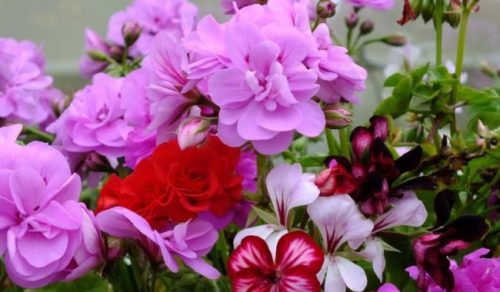
- Pelargonium bloom, which falls on the summer, is distinguished by an abundance and duration. The fruit box at ripening opens from below.
- Garden Pelargonium retains its decorative attractive appearance until the winter. Even the sworded bushes look neat and compact. Unfortunately, in winter, thermal-loving pelargonium needs warm, so it, if necessary, transplant and enter the premises.
- The life expectancy of many years of pelargonium averages 2-5 years, after which the culture loses its initial decorativeness and needs to be updated.
- Pelargonium and Geranium (called yet the chewing) are different plants of individual clans of one, general family. Geranium is successfully cultivated in the open soil, including without difficulty tolerate winter cold. What you can not say about the native of the southern regions, Pelargonium. Growing beauty is a pelargonium in the garden, repeat that it is a thermal-loving plant, which for the winter is placed in a warm room.
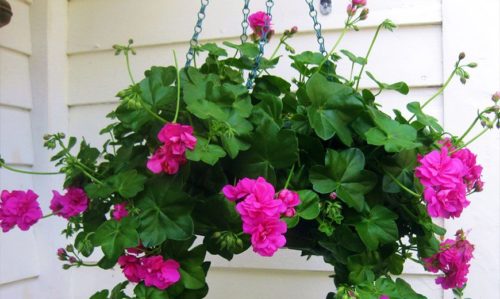
Pelargonium, types and varieties
Rod Pelargonium has more than 200 types of plant species, the most popular of which are considered the following varieties:
Royal Pelargonium
The species is characterized by small sizes of wide bushes with large and beautiful flowers (up to 15 cm in diameter). Plants are not towering over a bush, but are on the same level with all shoots. Often, the species is called "homemade" as the most common form of domestic flower growing. Externally, the bush looks spectacular and attractive as a bright fluffy ball.
Pelargonium Tulipovoid
The main feature of the tulip pelargonium is flowers that resemble the unacceptable tulip buds. About 50 small semi-world flowers are collected in fluffy inflorescences. The color of the inflorescence is diverse: from light pink to saturated burgundy. The leaves are shiny, tough.
Pelargonium fuse
The main feature of the irresistible pelargonium is unusual flowers similar to miniature roses. Numerous flower terry petals adjacent to each other, forming lush bud-shaped inflorescences. The view refers to the zonal hybrids of Pelargonium.
Pelargonium Mahova
Pelargonium is highlighted in beautiful and very attractive terry inflorescences. The color of the petals is diverse, depending on the variety.
The best varieties of Pelargonium: Pebbles (raspberry flowers), Shelk Moira (gentle salmon flowers), Brookside Fantasy (lilac flowers).
Pelargonium angular
High plant capable of reaching up to 100 cm. Unusual in the form of short-flower leaves are similar to oak, but with wavy shares. The inflorescence of the umbrella consists of a variety of flowers, usually bright red.
Pelargonium granny
Evergreen semi-waller, not exceeding in a height of more than 50 cm. Stems and leaves pubescent, bright green. Sitting flowers are collected in inflorescence umbrella and have pink-purple color of petals. Fragrant leaves on texture resemble crumpled, clearly divided by 3-5 parts.
Pelargonium Curly
The strongesting evergreen and low (up to 50 cm) a bush with fragrant leaves in the shape of a heart. The leaves are growing in two rows, have gear or torn edges. Short patterns carry 2-3 flower. Flowers in summer.
Pelargonium fluffy-core
A succulent leaf fall plant is characterized by thick fluttering stems and peristo-shared leaves. Sheet plate has a scary color, can be pubescent. Snow white flowers with a reddish core collected 5-6 pieces in the inflorescence of an umbrella.
Pelargonium fleshy
Low (about 30 cm) succulent perennial is characterized by thickened cracking shoots with convex nodes. Field leaves are dense, with distinct housing. Small flowers are mostly white or gentle-beige, and two upper petals have a reddish streak.
Pelargonium Tolstostebelny
A small plant with a thickened short (no more than 20 cm) stem. Sheet is long-meshy, wide, with silver flood. The inflorescence consists of 5-8 umbrellas. Color color varies from white to yellow, pink or purple. Many varieties also have a bright (contrast) labeling of petals.
Pelargonium aromatic
A strongly branching evergreen shrub can reach 1 meter in height. The leaves are very fragrant, divided by 5-7 shares. Pink-colored flowers are collected in the inflorescence of an umbrella.
Pelargonium large-flowered
A whimsical capricious appearance preferring warm content. The height of compact bushes can reach from 30 to 60 cm. Inflorescences are large and corrugated.
The best varieties of Pelargonium: Enzette Anna Melle, Geranimo (Red flowers), Mont Blanc, Perle Von Clemstal (Spotted flowers), Autumn Haze (orange flowers), Destiny (white flowers).
Pelargonium hobbouch
A variety of pelargonium with terry dense foliage. Leaves - bright green, long-barrel. Inflorescences are painted in purple-red tones. Flowering falls on the summer-autumn period.
Pelargonium dirty
Very high evergreen bush, capable of growing up to one and a half meters. The fleshy stem is seated with dark green, rounded shape, leaves. On short flowers are brightly scarlet inflorescences.
Pelargonium plusiness
The semi-staple view of ampel pelargonium is widely used for horizontal and vertical landscaping. It is considered highly sensitive to frost. Decorative foliage outwardly resembles the leaves of ivy, they do not emit characteristic of geranium smell and have no omission. The thyroid inflorescences are small flowering, terry, motley.
The best varieties of Pelargonium: Mustang (scarlet flowers), pigmy (cherry, pink flowers), Red Pandora (cherry flowers), Cascade White (orange flowers).
Pelogronia Pink
Evergreen branching shrub is distinguished by bilateral chopping leaves. The view has pink flowers, with dark contrasting streaks.
Pelargonium zone
View with a clearly defined sheet pattern, drought-resistant. A variety is widely used in decorative flower growing. Plant withstands cooling to 5-6 0WITH.
The best varieties of Pelargonium: Meteor (low), Rocky Mountain (salmon-raspberry flowers), Rumba Fayer (bright red flowers), bravo pastel (white-pink flowers).
Planting Pelargonium, Features and Agrotechnics
The race of pelargonium is considered very hardy and unpretentious, which facilitates the process of rooting and the rapid survival of the plant when landing into an open ground.
Planting time for Pelargonium is spring, and when the warm weather is completely installed, and the soil warms well. In many regions, this period falls on May month. If the perennial planted in pots or containers, they can be taken out to the street and earlier, taking care of protection against return freezers.
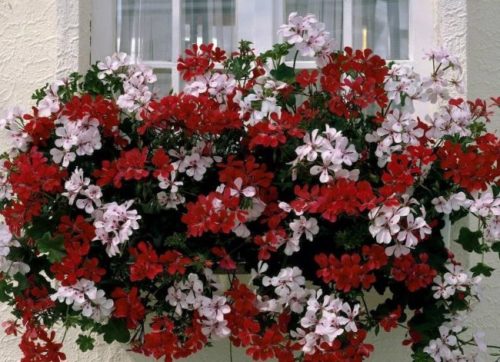
Choosing a place to landing Pelargonium
- Light-loving pelargonium prefers open areas, with scattering solar rays. Light halftime also allows the flower to fully develop and blossom throughout the season. In the shade and on the hot sun, Pelargonium will not be able to fully grow and blossom.
- The soil for planting Pelargonium in the garden should be fertile, light and drained. The plant is favorably responding to the peat, humid and sand present in the soil. High content of organic capacity in the soil can negatively affect the decorativeness of Pelargonium and weaken the plant to disease.
- Tight loamy and clay soil is bad for planting a flower. The reaction of the medium must be neutral or slightly acidic.
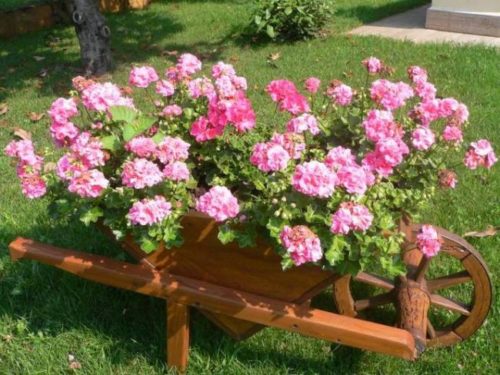
Technology planting Pelargonia
- Before boarding, it is necessary to properly prepare the soil: switch the site (to a depth of 30 cm), deposit mineral fertilizers and humus, to dissolve the entire surface with robbles. Do it better in advance, for example, in the fall.
- In the garden, on the open ground, the pelargonium is planted, as a rule, seedlings.
- The distance between the planted seedlings on a bed must be at least 20 cm. Approximately the same interval and stored in the aisle. If the same kind of Pelargonium large and sprawling, these indicators increased. When Pelargonium seedlings are planted into suspended porridge or street containers - the distance between the plants can be revived, cut.
- Digging a hole for seating Pelargonium, bury seedlings in the soil to 2-3 cm deeper than it grew before (in seedling pots). Such agricultural practices allowing young and flanked by an immature plant shortly after the landing time to form additional roots.
- If the grown dietary material turned out to be elongated and slightly sophisticated, the plant should be seen before boarding the ground. In this case, the flower will bloom a little later, but the bush itself will quickly strengthen and takes in a new place.
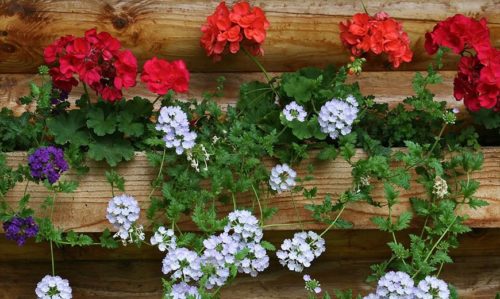
Pelargonium, garden care
As noted above, Pelargonium is considered a perennial plant, although in many regions (with cold winters) the culture of winter simply freezes. Therefore, when growing a decorative flower, it is important to take into account its thermal-loving qualities, as well as to know the key preferences and the peculiarities of the care of pelargonium.
Proper care for garden pelargonium will provide abundant flowering of decorative culture throughout the summer.
Watering Pelargonia
- The moisture and, at the same time, the drought-resistant pelargonium favorably "responds" to regular, moderate watering of the soil. The plant is capable without prejudice to transfer the short drought, but it is better to prevent severe soil cutting.
- The absence of regular irrigation affects the decorative appearance of perennials - the leaves are withering and radically, and inflorescences become small or completely fall. Excessive humidity or stagnation of water is also unacceptable: Pelagronia will begin to root and "stick".
- Especially important, watering for the plant immediately after landing, when seedling is still rooted in the open soil.
- The best water for watering Pelargonium is distilled or rain.
- In spraying (sprinkling) of the above-ground part, the plant does not need.
- Garden varieties of pelargonium prefer air temperature not exceeding +20 0S. In too much, the plant can be pronounced.
Up. Pelargonia
- The flower as fully "reveals" his decorative charms in a fertile fertile soil, which means you should not forget about the feeder of perennial.
- To ensure a lush and thick bush, with juicy green foliage and multitude of inflorescences, phosphorus and potassium-containing fertilizers are ideal.
- Phosphor jerks are made in spring, before the onset of flowering, on the moment of the formation of a shrub of Pelargonium. Potash fertilizers can be applied during the bookmark of the flower buds and during flowering. In winter, during the rest of the plants, the feeders are not made.
- Balanced fertilizer complexes for flowering crops can be used as supporting feeding. It is not worth overdoing with nitrogen-containing fertilizers, leading to the active growth of greenery and the almost complete absence of inflorescences.
- Extra-root and root feeders used for garden pelargoniums can be alternating. For abundant and prolonged flowering, Pelargonia is recommended to feed twice a month.
- Do not make fertilizers within a month after the transplant of Pelargonium. During this period, acclimatization of the plant to new environmental conditions is passed.
Trimming Pelargonia
- So that the flower throughout the growing season looks attractive and beautiful, it is necessary to trim the blurred inflorescences and yellowed leaves. Otherwise, Pelargonium will spend its energy and "power" on the formation of seeds, which will negatively affect the formation of new buds.
- Thus, the plant is cut into the formation of more dense and compact bustards of pelargonium. Then, by the emergence of new side shoots, culture will significantly improve their decorative attractiveness.

- If a long time stands rainy raw weather, it is better to cut off the shrub not only the shutters, but not discontinuing inflorescences. Such a reception will prevent the disease with a gray rot, which with inflorescences quickly goes to the green part of the bush.
- Some spring flowers prefer to pinch the tops of shoots. Then the bush is more active "goes into growth", and subsequently will please abundant blossom.
Diseases and pests of Pelargonium
- Pelargonium is a fairly sustainable disease to the plant. Usually the flower begins to root if the conditions of its cultivation are rudely broken. The reason can be drought or stagnation of moisture, insufficient lighting or direct sultry rays of the sun.
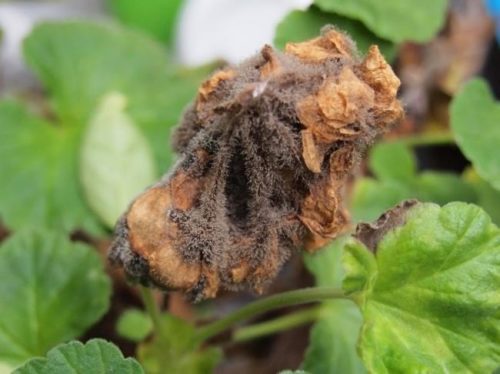
- If gray spots appear around the plant, and the stem begins to rot - maybe the disease is gray rot . The appearance of the fungus provokes dampness, coolness, poor air ventilation (in winter) and overvaluing. To combat the disease, it is necessary to clean the section from weeding grass, remove all the affected areas from the plants, stick to the right irrigation mode (in the morning or in the evening), apply the processing of Pelargonium to Fungicide.
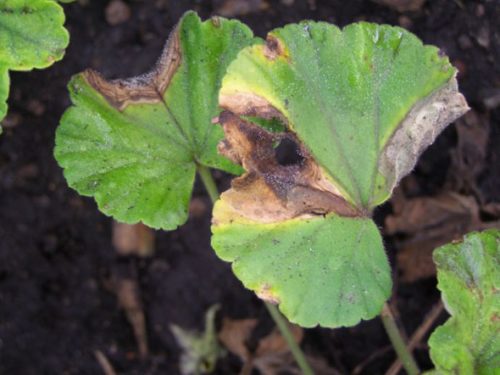
- Browned stains and filled edges on the leaves, as well as the drying of the shoots indicate the bacterial nature of the flower disease. In the fight against the disease, appropriate chemicals will be needed.
- Pelargonium pests can be attacked byphids, white bumps, cabbage caterpillars or ticks. Various insecticidal drugs will help bring pests.
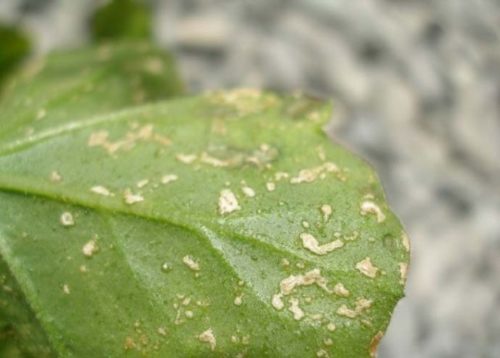
How to keep the pelargonium in winter?
- A native of the South, Pelargonium, does not tolerate even short-term freezers, so in the winter it needs special care.
- The perfect option is the initial planting of pelargonium into containers or pots, which can be easily taken to the room on the eve of winter cold. Moreover, in this case, Pelargonium will continue flowering even in the fall.
- If the perennial bushes grow in the open ground - in the fall they dig them, cut roots and shoots, then planted in room containers. In the room, Pelargonium should be in the stage of rest. To do this, it is important to comply with certain conditions: reduced air temperature (15-20 0C), limited watering and lack of feeding.
- Often, when growing pelargonium in open ground, the autumn blank of cuttings is practiced, which are treated with "root" put into water, and then planted in small containers. In the spring, rooted cuttings gradually hardened and planted on the flowerbed. The length of the topless shoots for the preparation of full cuttings should be about 20 cm. So it is possible to maintain a sufficient number of instances of pelargonium for landing for the next year.
Pelargonia reproduction
There are several ways of breeding Pelargonium: seed and vegetative (with the help of green cuttings).
The seed method is considered a longer process than reproduction with cuttings. So as to obtain a blossoming pelargonium seed, will need at least 3-4 months, while instances, grown from cuttings, bloom in 2-2.5 months.
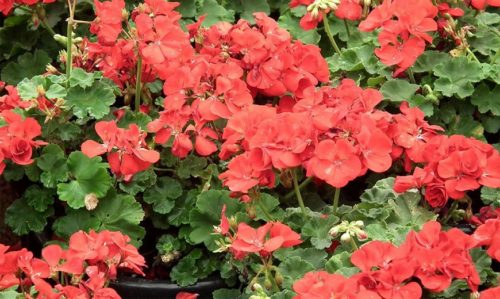
Reproduction of Pelargonium Seeds
- Pelargonium, grown from the collected seeds, may not repeat the signs (for example, the color of the petals) of the parent plant.
- Currently, in a specialized flower store, you can easily buy seeds of various varieties of pelargonium.
- Pelargonium seeds before sowing must be subjected scarification - process violates the integrity of the seed envelope and further improves its germination. For this purpose, seeds wipe between two sheets of sandpaper, and then soaked in warm water for 3 h. Seeds that have not undergone scarification differ reduced germination and sprouting over prolonged period. Seeds bought in the form of pills, in scarification need not be ready at once, and for sowing.
- Seeds are sown in the winter or beginning of spring in a nutrient pochvosmesi capacity (of sand and peat). Growers for planting peat is used as a tablet. Pelargonium seeds sowing is carried out the surface without additional recess. Suffice it a little sprinkle seeds on top Peat mixture.
- Seed care is reduced to periodic moisturizing of the soil substrate (from the pulverizer) and the creation of a microclimate acceptable to appear. For this, the seed containers are covered with a film or glass, imitating the greenhouse. It is important not to forget to regularly ventilate such a mini greenhouse.
- After about two or three weeks after sowing, Pelargonium searches appear. When seedlings form a 3-4 leaflet - Pelargonium seedlings are diverting and planted into open ground. Pages (above the 6th sheet) seedlings will continue to form a lush bush of Pelargonium.
- As a rule, planting the modified seedlings is carried out at the beginning of summer. Landing is preceded by a period of gradual hardening of young plants. For this boxes with a seedler (2 weeks before landing), they take out a few hours to the street. Every day the seedlings in the fresh air increase.
- The reproduction of pelargonium from seeds allows you to grow hardy and steady grade plants.

The reproduction of Pelargonium Strenniks
- The silent of pelargonium is the most efficient and common way to breed a culture.
- With this method of reproduction, the young plant completely inherits signs of the parent grade.
- The cuttings are cut with healthy and strong plants to ensure optimal escape development.
- Pelargonium cuttings - Top shoots with 2-3 interstices can be chopped almost at any time of the year. The lower cut is better to make oblique and dry it 1-2 hours in the air.
- Next, the cuttings are placed in moistened sand and leave for rooting. For 100% rooting, flower products often use drugs that stimulate the root formation process. Also recommended preliminary disinfection of the soil substrate.
- Temperature regime in the room should not exceed + 16-18 0With, followed by (as it is rooted) by increasing to +20 0S. About a month later, the cuttings form a sufficient number of roots so that they can be transplanted into other tanks and to grow to the state of full seedlings.
- After formation of 6-8 leaves, pinching is carried out - removing the top point of growth. The development of lateral shoots makes the pelargonium bush more fluffy and decorative.
Pelargonium, Plant Application
- Pelargonium has been used for quite a long time in industrial flower growing, municipal landscaping and in flower compositions of private sites.
- Plant culture in open ground in flower beds, in portable containers or in suspended containers. In addition to landing in the garden, Pelargonium is often planted as a potted room plant.

- Perfectly pelargonium in the garden when decorated Rabatok, alpine slides or mixboraders.
- Thanks to the diverse palette of the paints of numerous varieties of pelargonium and height of the bushes, from 10 cm to 1 meter, - Pelagronia is combined with almost all plants and is used in the most "bold" compositions. Pelargonium is planted with roses, sage, Russian, medical and cereal plants.
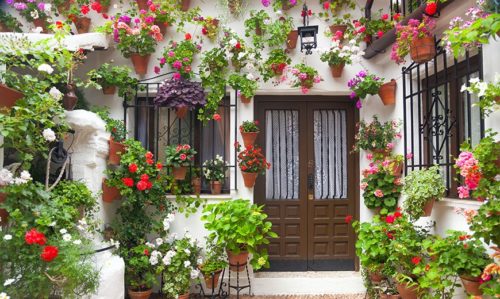
- Pelargonium leaves are used to obtain fragrant geranium essential oil. In addition, the flower highlights useful phytoncides that kill pathogenic microbes.
- The squeezing from the roots of certain types of pelargonium is a valuable drug in the treatment of infectious diseases of the ENT organs. The leisure leaves of perennials are used in folk medicine for the treatment of diseases of the gastrointestinal tract and at nervous disorders.
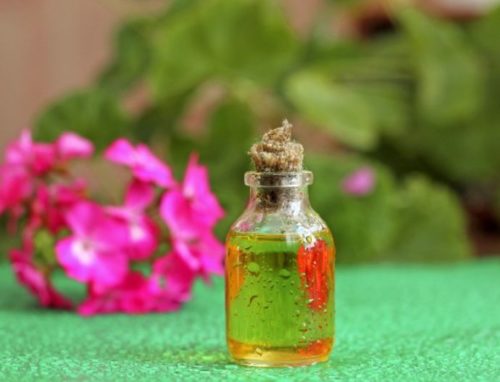
In general, Pelargonium has proven itself as an unpretentious life-made plant, which grows rapidly, and long and long blooms, perfectly breeds.
Perennial garden pelargonium does not require complex care, so grow a beautiful decorative flower on my flowerba can even be a beginner flower.

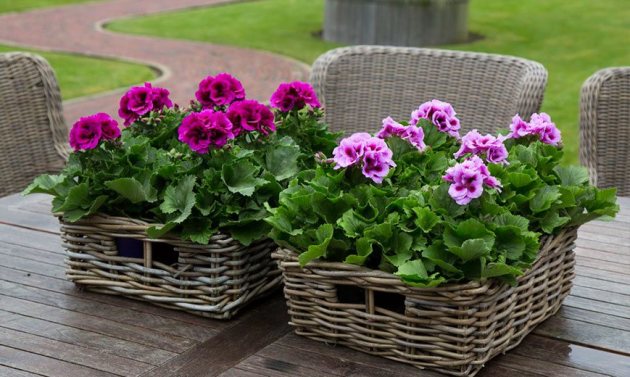

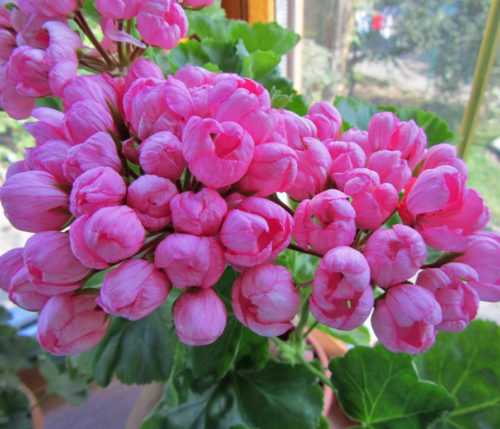
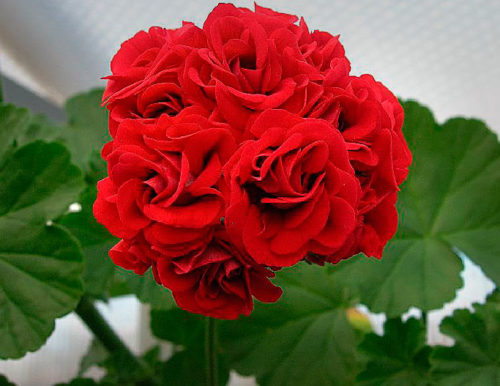
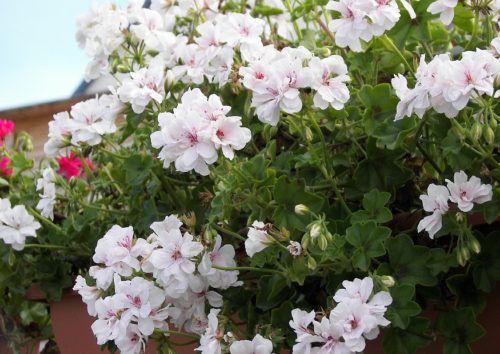
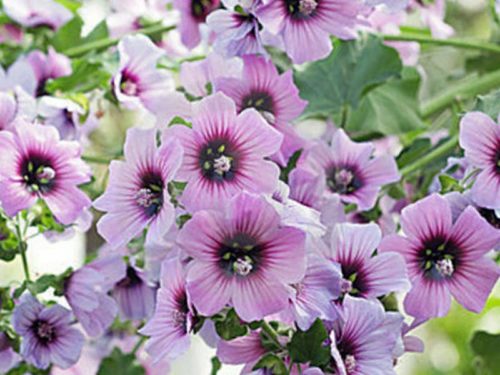
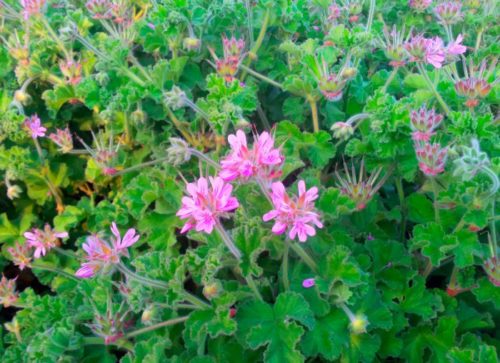
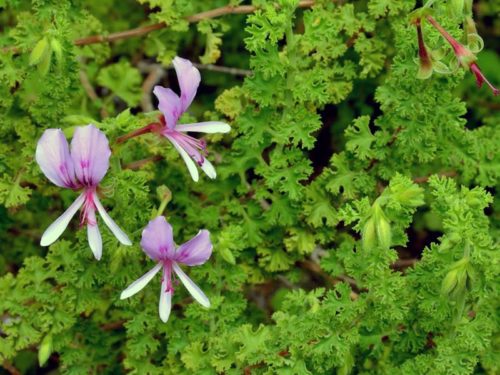
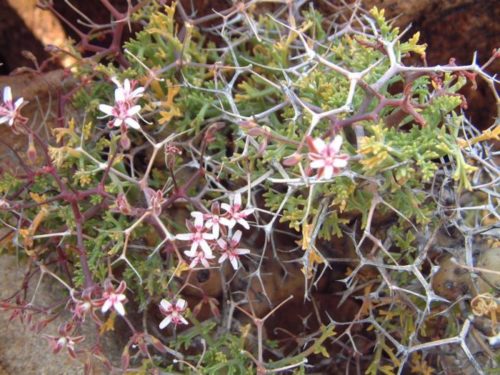
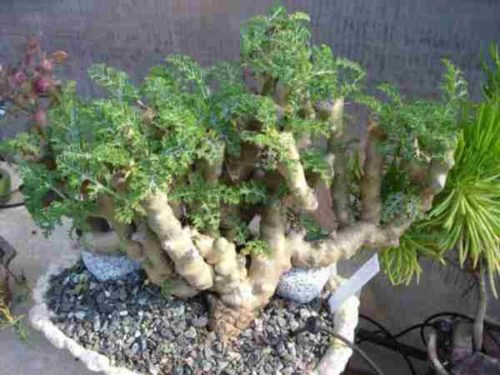
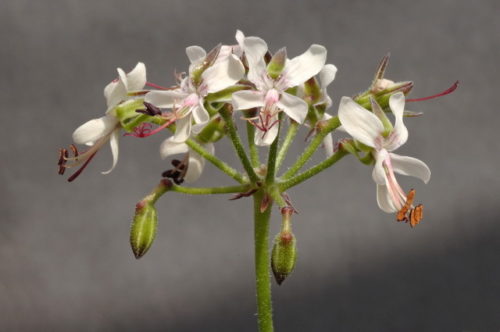
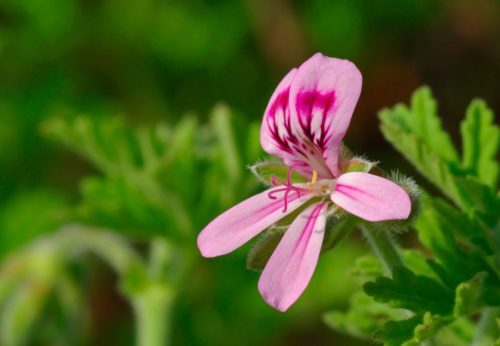
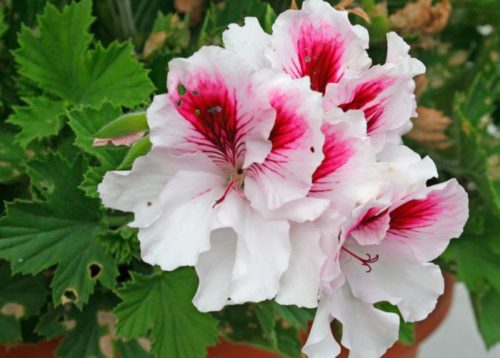
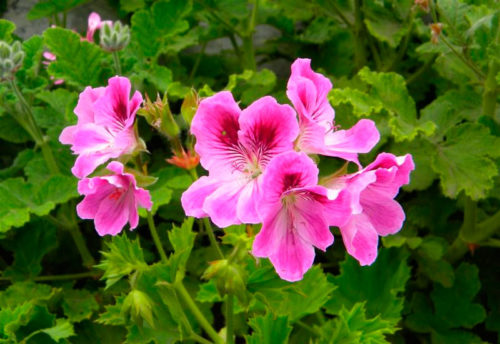
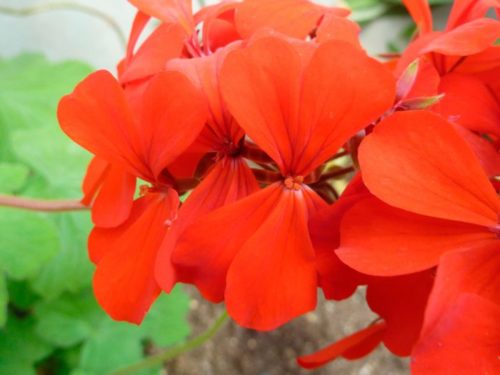
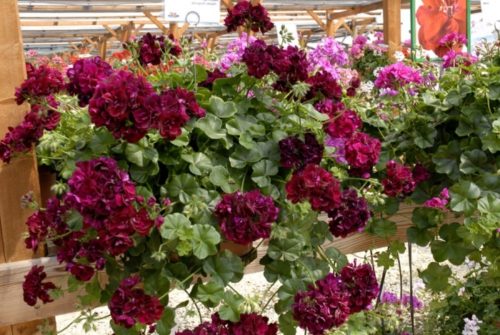
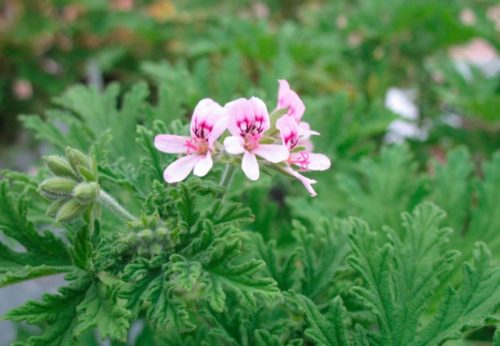
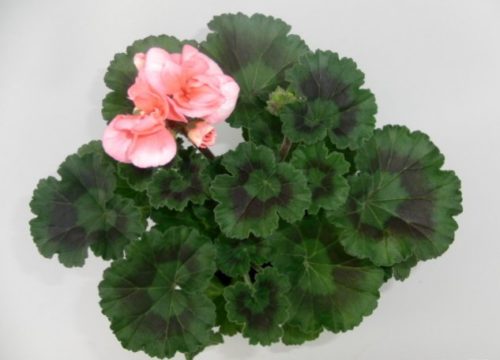
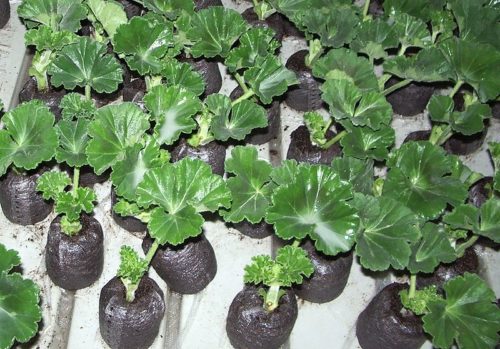
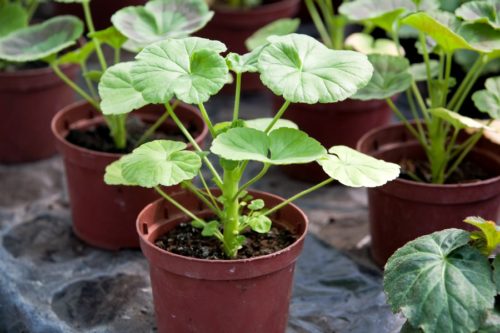
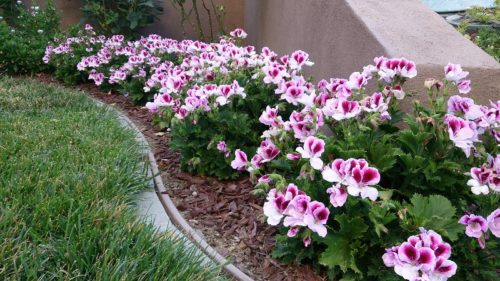
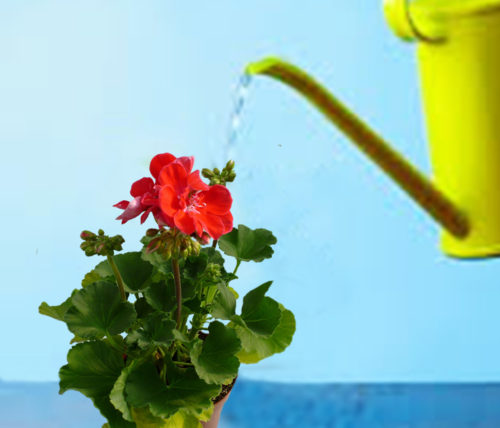
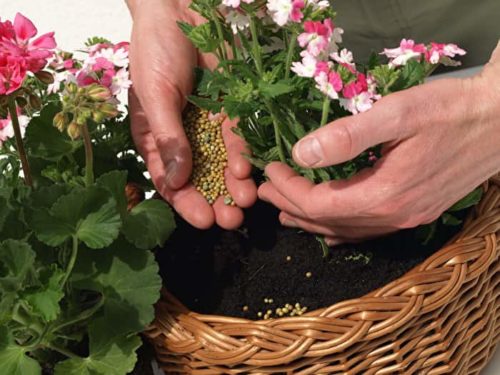
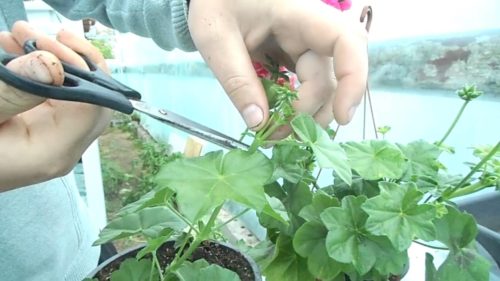
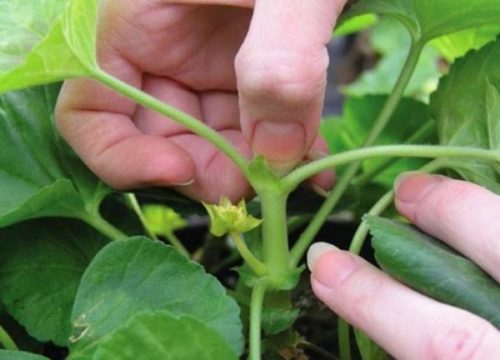
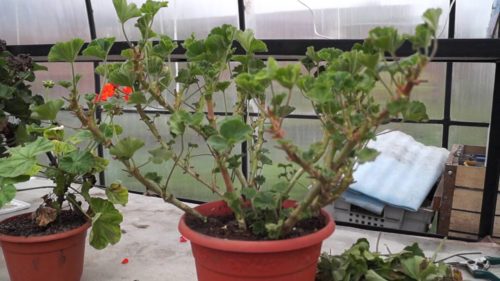
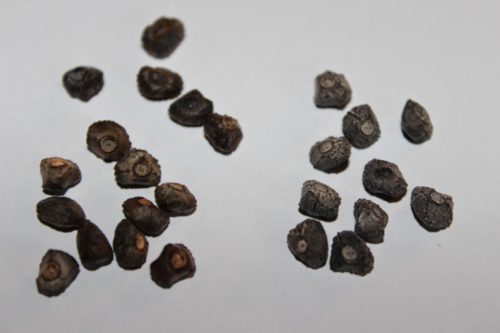
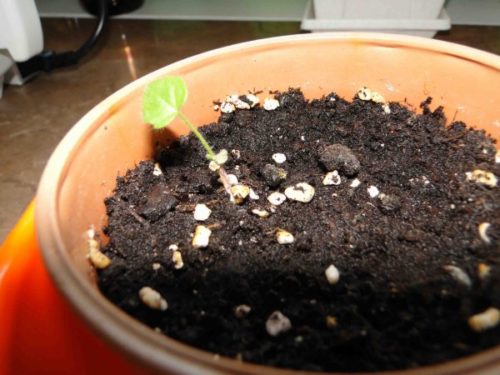
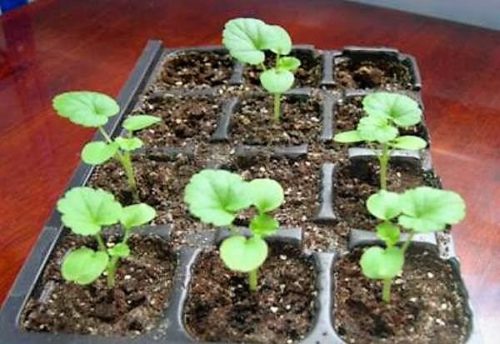
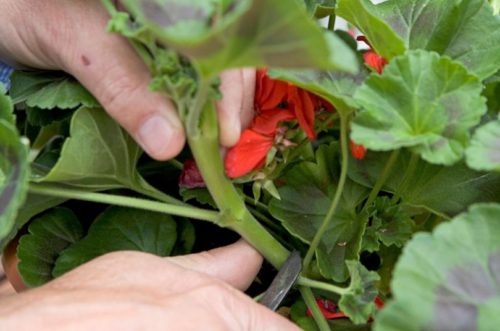
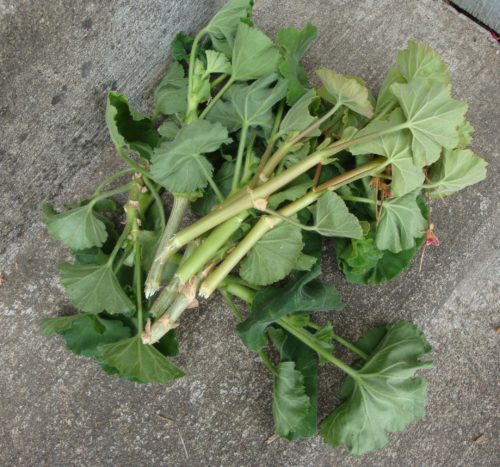
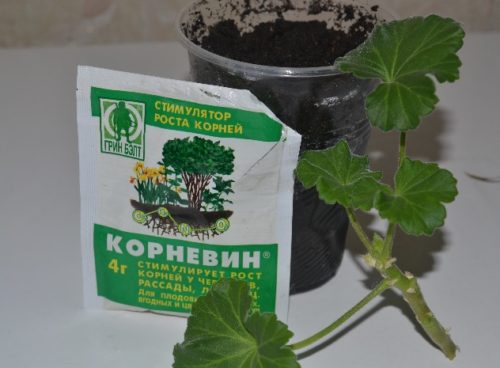
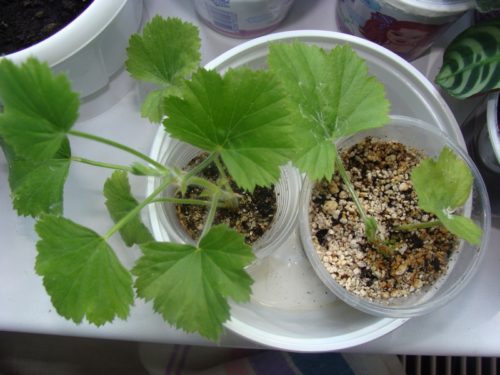
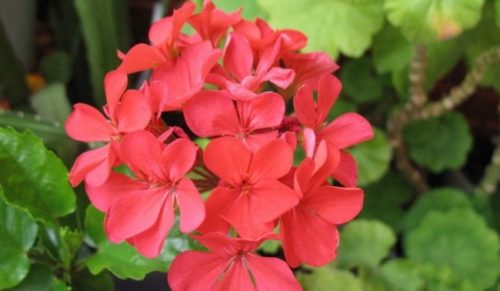
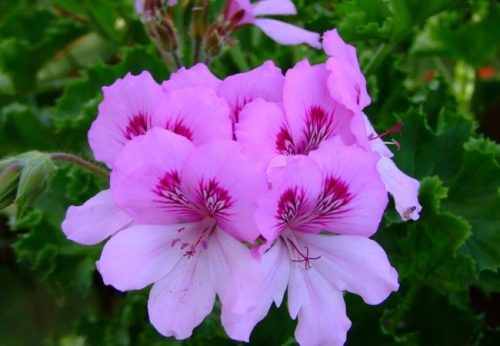
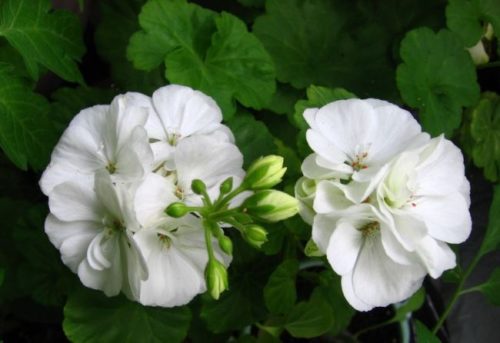
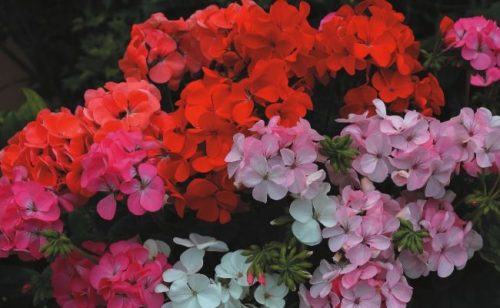
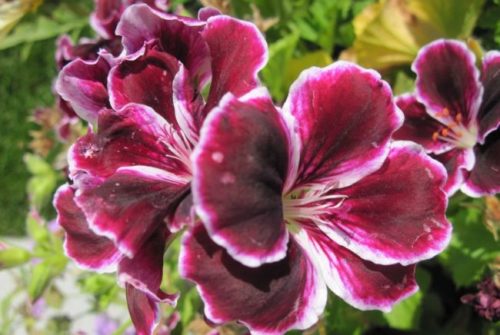
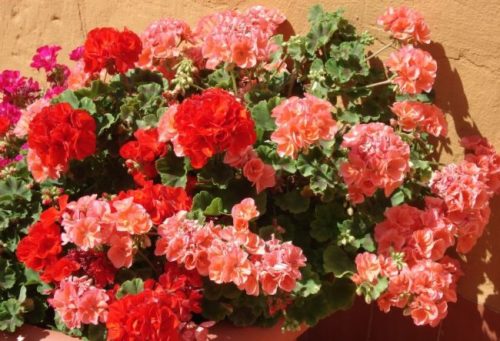

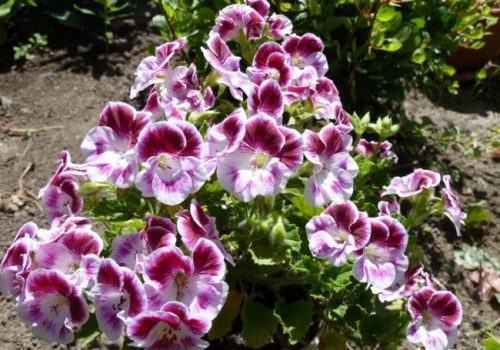
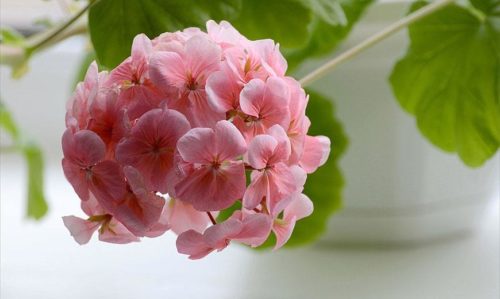
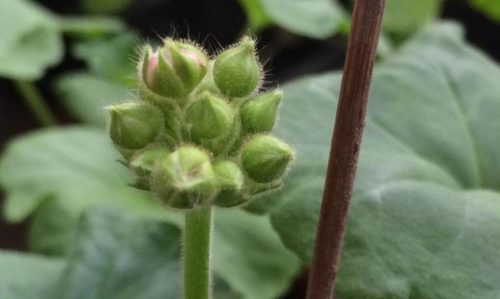
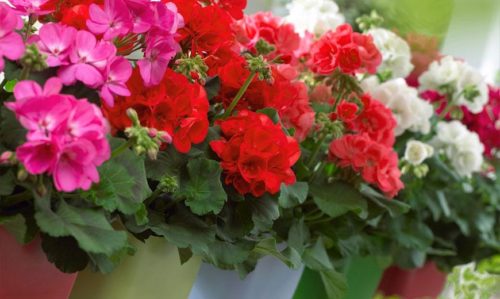
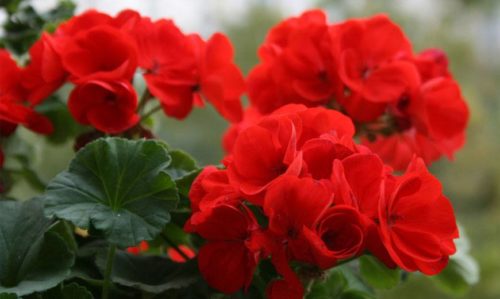
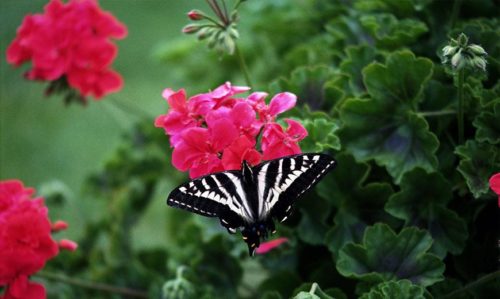
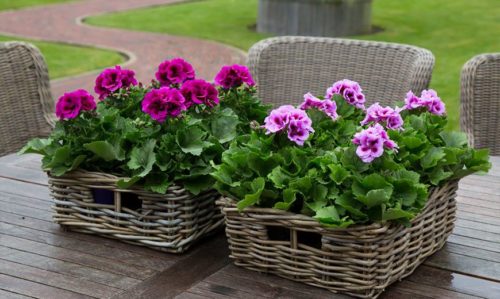
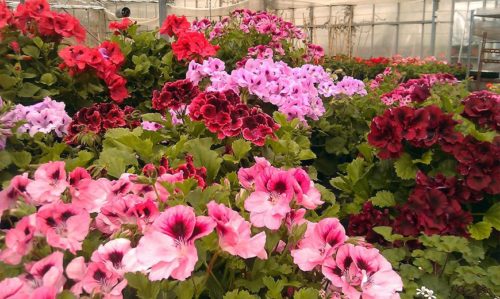
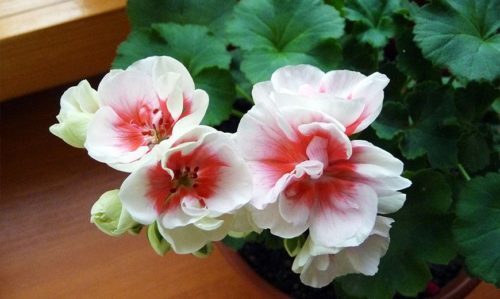


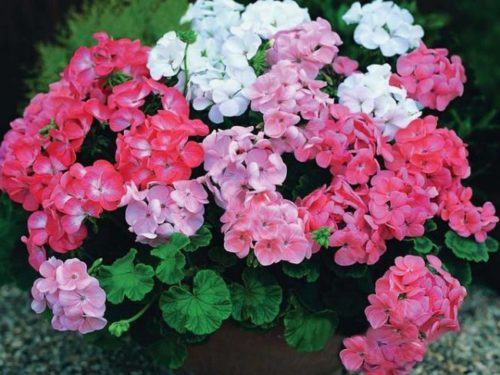
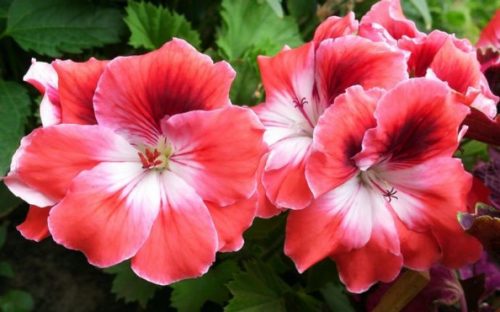












 Start a discussion ...
Start a discussion ...